
To reach the butterfly artist’s house, you have to navigate a maze of mud-brick homes near the wide, brown Oubangui River. Four years ago Muslim rebels and Christian militias rampaged through, fighting for control of Bangui, the capital of the Central African Republic. Today the neighborhood is filled with squealing children playing soccer and chattering vendors hawking peanuts and eggs, avocados and mangoes, wild honey and peppercorns. But violence still plagues the city, and the people here remain keenly alert to the sounds of gunshots and military helicopters.
Philippe Andé is oblivious to all of that. A slight, balding man, he hunches over a worktable covered in butterfly wings—a constellation of electric colors, flamboyant shapes, and exotic patterns. The Central African Republic is home to 597 identified species, and it’s common to suddenly find yourself amid a cloud of the silent, fluttering creatures, as though you’d wandered into a flurry of confetti. Andé, a farmer, catches them in his fields and sends boys to collect them in the hills and along the river.
With tweezers, a razor blade, and rubber cement, he painstakingly arranges the tissue-thin wings into radiant scenes of Central African life, each a miniature stained glass window. A man catches a speckled green fish in a swirling turquoise river. Women in orange dresses with sleeping babies tied to their backs pound cassavas into flour. A boy climbs a tree to harvest coconuts. There are fields filled with cotton; portraits of elephants, gorillas, parrots, antelope; even a faceted diamond, the country’s most famous export.
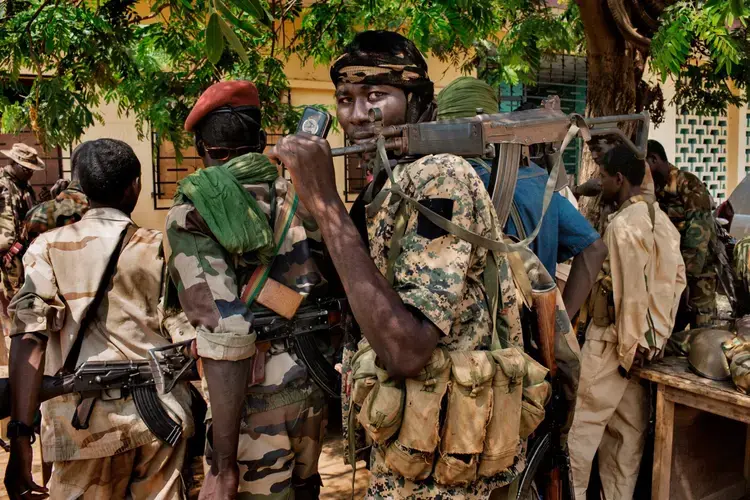
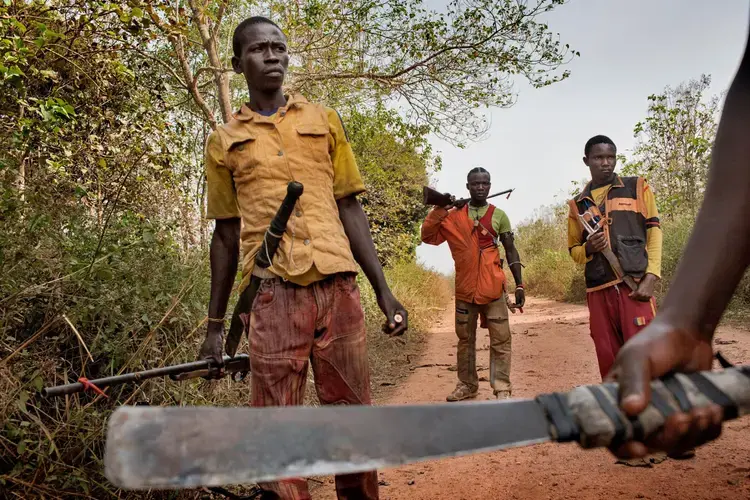
This is the Central African Republic that Andé chooses to see when he closes his eyes: the time before 2013, the year the Seleka—an alliance of predominantly Muslim rebel groups—looted, raped, killed, and burned its way across the country; toppled the corrupt Christian-dominated government; and ignited a brutal, still smoldering civil war that has killed thousands, displaced nearly a million others, and created food shortages.
To be honest, Andé’s enchanting pictures represent some of my own idealized impressions of the Central African Republic. The country caught my attention when I saw it highlighted on a conservation map, an island of green roughly the size of France containing some of Africa’s last pristine wilderness. I learned that vast stretches of its forests remain uninhabited and teem with wildlife. Beneath this bounty lies a wealth of resources, including diamonds, gold, uranium, and possibly oil. It seemed reasonable that such a sparsely populated country—only five million people, compared with France’s 65 million—would thrive. But it was failing. Why? That question has plagued me over the past three years as I’ve reported on what Central Africans refer to as the Crisis, their term for the war and the chaos that has followed.
On my first trip to Bangui, I put the question to a French Army officer as we sat on an Air France flight about to take off from Paris. It can be a touchy subject for the French, who colonized the country during the European rush for Africa in the 19th century. The Central African Republic gained independence in 1960, but the French have remained deeply involved in its affairs. Today Central Africans rely on Total, a French company, for much of their gasoline, and the currency the nation uses is backed by the French treasury.
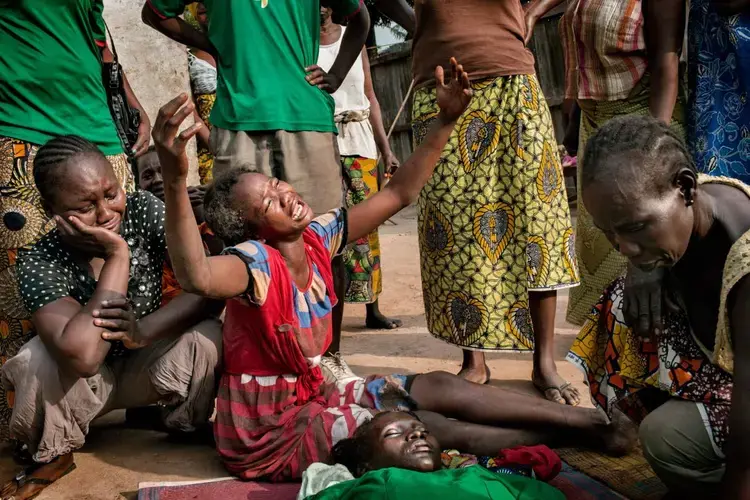
The officer, a broad-shouldered man in his 40s, was embarking on his second peacekeeping tour. “Logistics are a big problem,” he said, shaking his head. “It’s a big, landlocked country, and the roads are shit.” He described how during the rainy season, from May to October, villages in the marshy northeast are entirely cut off, shutting down important trade routes. “The economy in the north can’t grow, and the people there are angry,” he said. “That is where the Seleka was born.”
At that point we were interrupted by the screaming of a Central African woman who was being deported. She’d been escorted onto the plane by two policemen and handcuffed to her seat. She strained against the handcuffs, yelling hysterically. The other passengers were a mixture of Central Africans returning to their country, peacekeepers, aid workers, and diplomats.
The woman’s words unsettled the Central Africans. “She is a sorceress,” complained one man. “She is cursing the plane,” said another. The flight attendants tried to calm the passengers, but soon several were trying to pull their bags from the overhead bins and demanding to get off. After an hour’s delay the pilot ordered the police to remove the woman. He announced that because of the delay we would have to lay over that night in Cameroon. “We cannot land in Bangui at night,” he explained, “because the airport lights do not work.” The officer leaned over and said, “It is also because it is not safe to travel the road from the airport to the city at night.” He grinned ruefully. “This is how things work in the Central African Republic.”
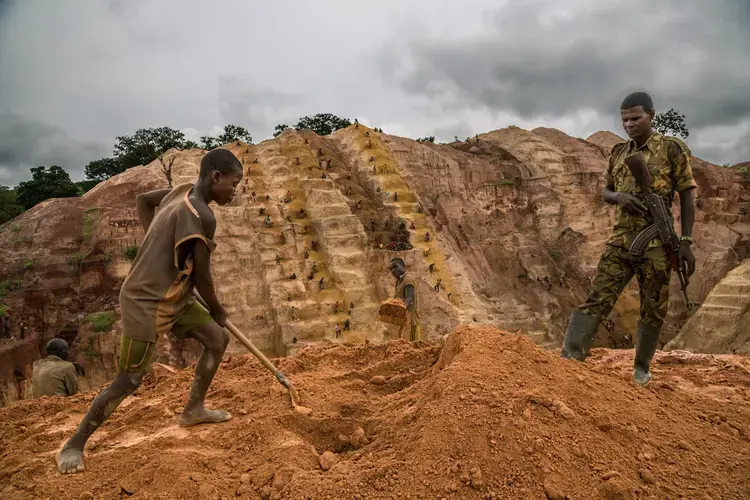
On one of my first days in Bangui, a local guide drove me to a small plaza with six gold-painted statues. An exuberant man in a brightly colored dashiki, he explained that the plaza illustrated all the history I needed to know. The plaza honors the six men who led the country from its independence movement to the start of the Crisis. The statues were chipped, and goats nibbled weeds growing in cracks in the pavement nearby. “This is Barthélémy Boganda,” he began at the first statue, as if he were a professor holding class. “He is to Central Africans what George Washington and Martin Luther King, Jr., are to Americans.”
From my reading I knew the story of Boganda, the self-described son of a cannibal, who famously negotiated with Charles de Gaulle for the country’s independence. But I didn’t interrupt my guide. He seemed comforted to talk about the one leader nearly every Central African regards as a saint. In conversations with dozens of Christians and Muslims, I never once heard Jesus or Muhammad invoked, but Boganda was cited often. He was born into what was then the French colony of Oubangui-Chari, named for the rivers that defined its southern and northern borders. Private companies ran the colony with impunity, and any notion of justice was left to its administrators. On Bastille Day, 1903, a French official in Kaga Bandoro allowed his men to execute an African prisoner by inserting a stick of dynamite into his anus and igniting it. “It is a bit stupid, but it will dumbfound the natives,” the official explained. “After this they will probably keep quiet.”
Boganda’s life reads like that of an Old Testament prophet. Just before his birth in 1910, French forces killed his father during a raid on his village. Company guards clubbed his mother to death when she refused to collect wild rubber. The orphaned Boganda was taken in by a Roman Catholic priest, and he would go on to take his own vows, becoming Oubangui-Chari’s first native priest. He later served as its first native representative in the French National Assembly, becoming an outspoken critic of French rule. When independence was imminent, Boganda was the people’s clear choice to be their leader.
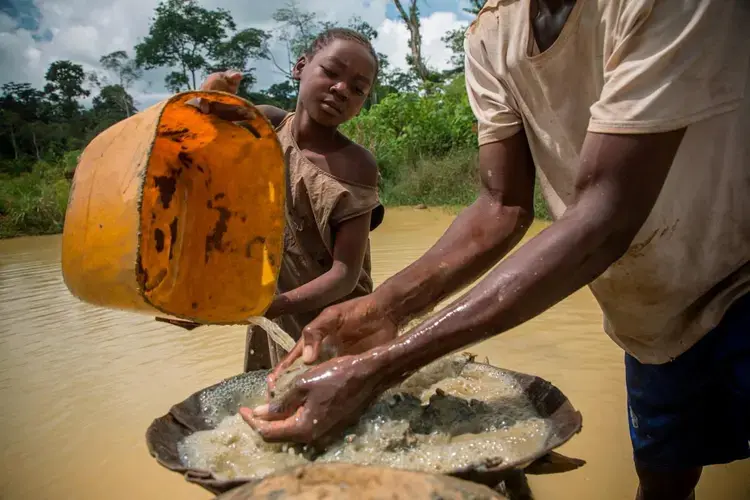
He dubbed the nation the Central African Republic, designed its flag, and wrote the country’s motto: “Equality for Everyone.” But on March 29, 1959, just before the first elections, a plane carrying Boganda exploded in midair. Today people throughout the country believe that the French were behind his death, despite France’s denials. The incident has colored the relationship between the countries ever since.
“We were their colony, and they didn’t want to let us go,” the guide, a forest ranger by trade, said. “You can quote this, but please don’t use my name. The French still think we are their colony.” He pointed to the statues of the other five men, who had all served as president. “When each one of these guys decided to go against the French, he was replaced by the next guy.”
But the leaders who followed Boganda have their own sins to answer for, he said. Walking down the line of statues, he pointed an accusatory finger at the stern visage of each man, as if he were speaking directly to him. He described how they squandered the nation’s wealth, played favorites among the country’s numerous ethnic groups, and stirred deep resentment among the 15 percent of the population that is Muslim (the rest practice Christianity or animist beliefs). He stopped at the last statue, the man whom many Central Africans accuse of starting the Crisis, François Bozizé, an army officer who seized power in 2003. “He promised the Muslims he would include them in his government, if they would help him take power. Then he betrayed them, and that’s how the Seleka came together,” the guide said.
Seleka fighters achieved their goal of dislodging Bozizé but had little idea how to govern. They controlled Bangui for less than a year before the United Nations sent in a peacekeeping force. The Seleka withdrew to Muslim-dominated regions, and the alliance soon fractured. The disparate rebel groups split their territory into fiefdoms, each controlled by a former Seleka leader who has tapped into local resources to raise money to pay fighters and buy weapons. During the past year they’ve begun attacking each other, prompting 70,000 people to flee their homes.
Photographer Marcus Bleasdale and I wanted to explore how these resources, which hold such promise for the nation, have become the lifeblood for the forces that keep it divided. We decided to visit Bambari, a town in the center of the country and the biggest in the territory controlled by former Seleka leaders.
It takes a day to get there from Bangui by 4x4 along a route that cuts through thick forest and passes several villages the Seleka brutalized on its path to the capital. When the UN peacekeepers are patrolling, the road is generally safe. Other times bandits lie in wait. Some are former fighters from the Seleka, or from the Anti-Balaka, militias formed by Christians and animists to fight the Seleka, but it’s hard to tell. The nation is awash in desperate people and weapons. Kalashnikovs of varying makes and vintages are sold on the black market, but bandits are just as likely to brandish crude shotguns made from stolen water pipes.
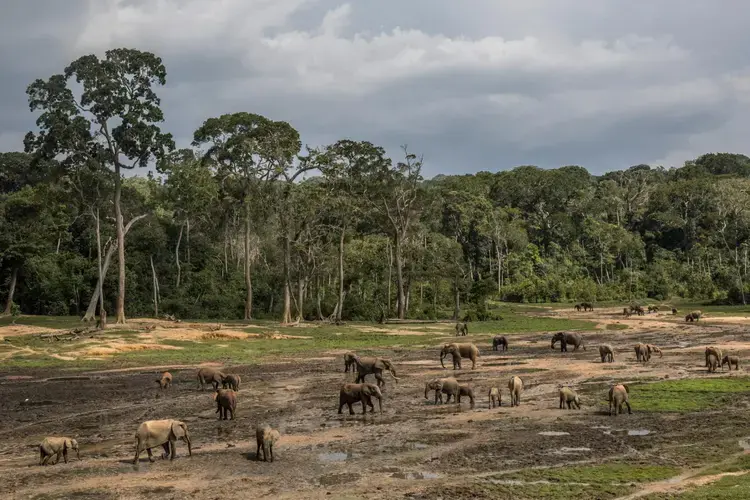
Much of the road is unpaved and pitted with deep ruts that require drivers to slow almost to a walking pace, offering opportunities to stage ambushes or, as we discovered, to sell things. As our driver navigated a particularly rough stretch, a man emerged from the forest waving two large turtles. He walked next to the vehicle calling out prices, slowly reducing them as we pulled away. Later another man held up a freshly butchered antelope shank. Then some giggling boys presented two strings of still wriggling fish. When we paused to look at the fish, a girl dashed out carrying bottles filled with wild honey.
The man Marcus and I wanted to meet in Bambari was Ali Darassa, a former Seleka general who controls the town. Black husks of burned homes are all that remain of its largest Christian neighborhood, and tens of thousands of Christians now live in a tent camp on the edge of town. The market district run by Muslim traders is still open but does a fraction of the business it did before the Crisis, when Christians frequented its shops, butcheries, and teahouses.
Darassa’s fighters roar around in pickup trucks with mounted machine guns, brazenly ignoring the UN peacekeepers, who seem to do little more than flirt with young women. His fighters collect a $50 tax on every head of the hundreds of cows bound for Bangui markets each week. They also demand protection money from shop owners, collect tolls from vehicles, and tax the area’s coffee trade. But the crown jewel in Darassa’s portfolio is a gold mine about 40 miles away.
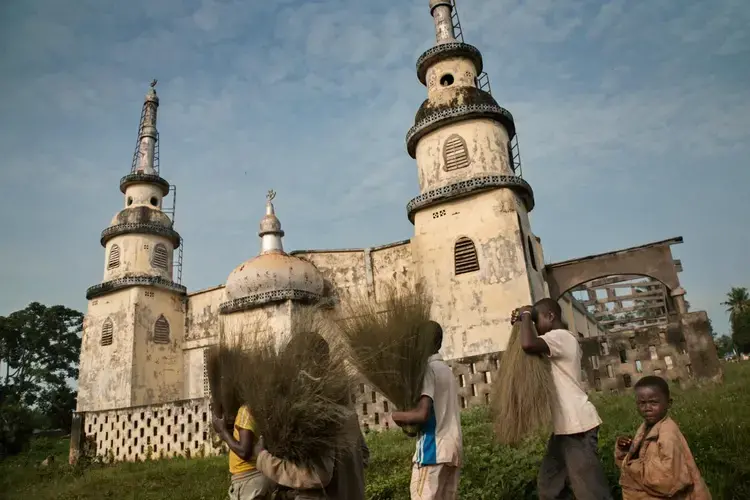
I tried several times to interview Darassa, and his men always made excuses. But they said he didn’t have a problem with our visiting the gold mine, which is how, one morning, Marcus and I came to stand on the edge of a deep, terraced gorge that had been dug by a small army of men.
One of the foremen, a fireplug of a man in his early 30s with hands as hard as anvils, told me he’d been working at the mine since it opened three years ago. Before the Crisis, a Canadian company had begun prospecting at the site, but when the violence erupted, it left, along with dozens of other foreign companies that had been exploring for oil, harvesting timber, working on roads and dams. Very few have returned.
The gold is extracted from gravel found at the bottom of the mine, he explained. Some 300 lithe, muscled men and boys were organized in vertical lines stretching up terraced steps to the rim. I watched as the men at the bottom shoveled dirt over their shoulders to the men on the terrace above them. They in turn shoveled it up to the next level and so on, like an escalator of dirt. The men, singing, shouting, and scraping, tended to fall into a rhythm. Choof, thump, choof, thump, choof, thump. I watched several men pass a cigarette up their line, each taking a puff before returning to his labors.
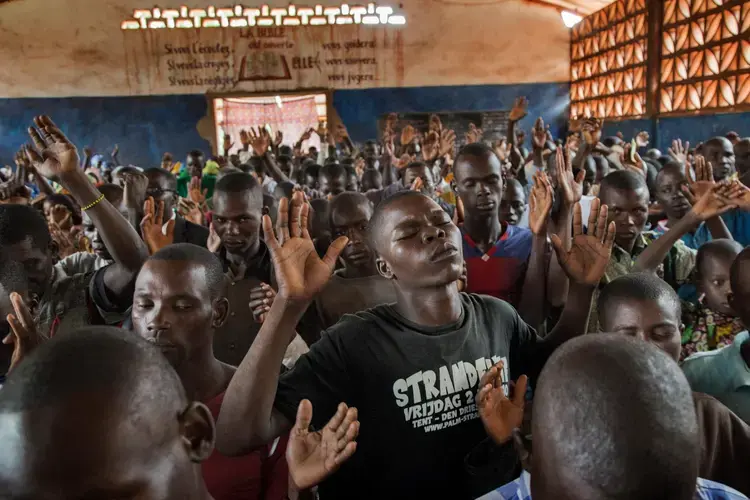
Each man, the foreman explained, earns about nine dollars a day. Some of Darassa’s fighters, shouldering Kalashnikovs, wandered by. The foreman stopped talking, but when they moved on, he estimated that the mine generates some four million dollars a year. He said Darassa collects 6 percent of the gold “for security.”
We spent several hours at the mine and shantytown built to house the men. There were restaurants selling grilled beef, boiled cassava, and Mocaf beer from Bangui; a cinema showing Vin Diesel and Sylvester Stallone DVDs; and shops selling toothbrushes, soap, and knockoff European soccer jerseys. The foreman told me all the storekeepers take gold as payment. We watched as women and children helped the men sieve the gravel. “There,” said a young man, smiling broadly and pointing to a tiny fleck. “That is gold.”
As a foreigner I was often approached by people who wanted to tell me about things that have happened during the Crisis. The first time, a man came to my hotel in Bangui and asked to speak to the American. “I want to tell you what happened to my nephew,” he told me.
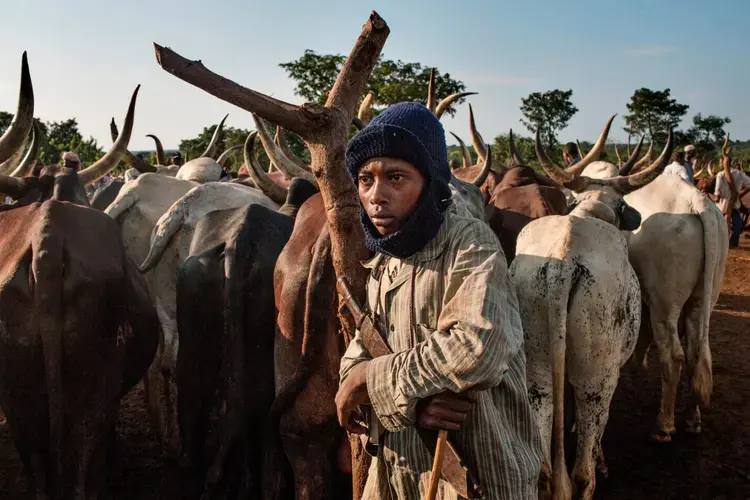
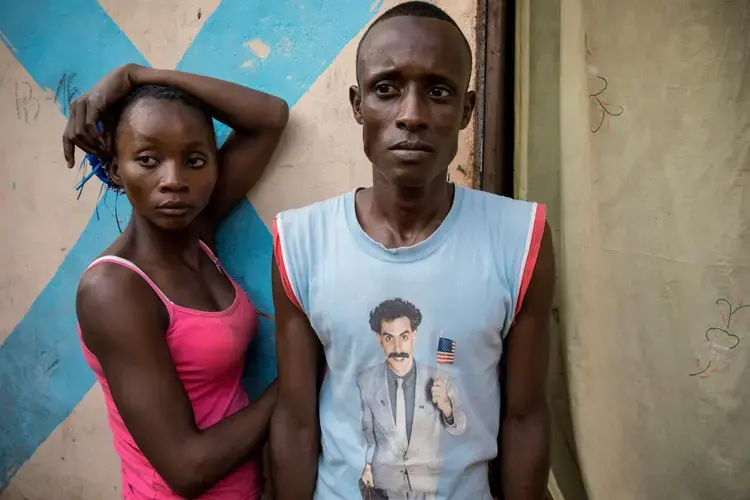
We took a motorbike to his house, where I met Paul Koli-Miki. He told me that two days before, he had been abducted by Seleka supporters while working near a Muslim neighborhood called PK5. They beat him with a hammer and used a pair of pliers to rip out three of his teeth. His voice was still muffled by the bloody cotton pressed into his gums, and his eyes were wide with shock. He had filed a complaint with a city tribunal in Bangui. “I don’t know if I will receive justice,” he said.
That is a lament thousands of Central Africans could make. The Crisis has shattered what was left of the decrepit court system and the public’s shaky confidence in the rule of law. There are police and some functioning courts—I once got a traffic ticket in Bangui for not wearing my seat belt—but for the most part they are ill prepared to deal with serious crimes, which raises the question: Can the country recover if justice is never served?
Given this void, people have turned to foreigners to register their grievances. A rawboned Muslim man wearing a knitted skullcap once approached me at a mosque in the western town of Berbérati. Thick glasses magnified his pale blue eyes, and his fingers had a slight tremor as he reached out and took my hand as if to hold me in place. “The Anti-Balaka killed all my cows. They cut down my fruit trees. And they killed my son.” His voice caught, and he gripped my hand. “I am 76 years old. What can I do? What can you do?” He started weeping.
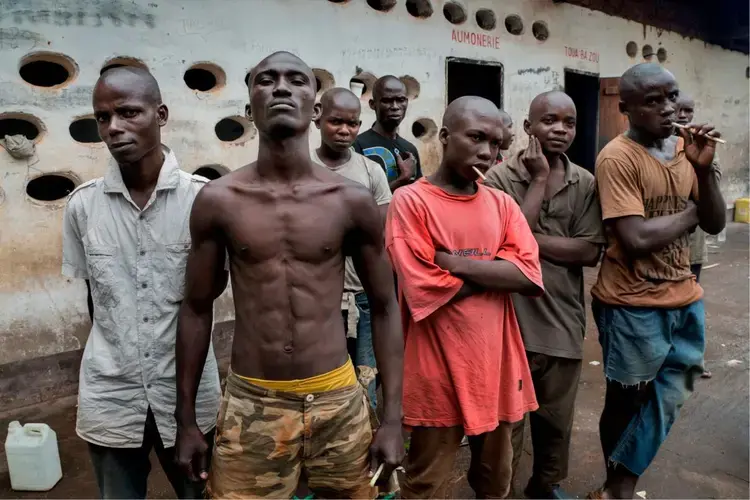
Among the most troubling of these encounters occurred when I met a girl who said she had been sexually abused by a French peacekeeper. The girl’s mother explained that when the Seleka moved closer to her Bangui neighborhood, she fled with her daughter to the airport, which was protected by French troops. “The French soldiers were so kind to us,” the mother said. “[They] shared their food and water bottles with us.”
The girl listened quietly as her mother spoke. She was about five feet tall and had recently turned 17. Her hair was pulled back in neat cornrows. She kept her eyes on the floor as she described in a timid voice how she met a tall French soldier with a mustache when she passed by his checkpoint, a small sandbag enclosure. “He gave me cookies and sweets,” she said. He started saying things in French she didn’t understand, so he used sign language to show he meant sexual intercourse and pulled out his penis. She took a deep breath, and her voice grew even softer. “The man showed me some food. He said, ‘If you cry, I will beat you. If you don’t cry, I will give you food every day.’ So I agreed to have intercourse.”
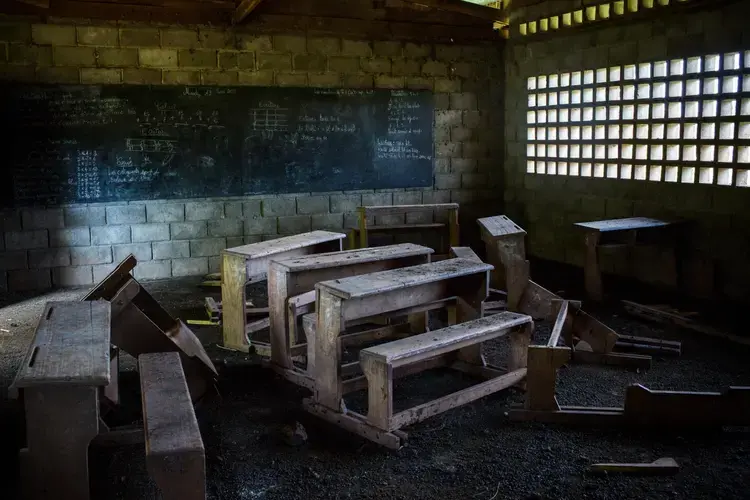
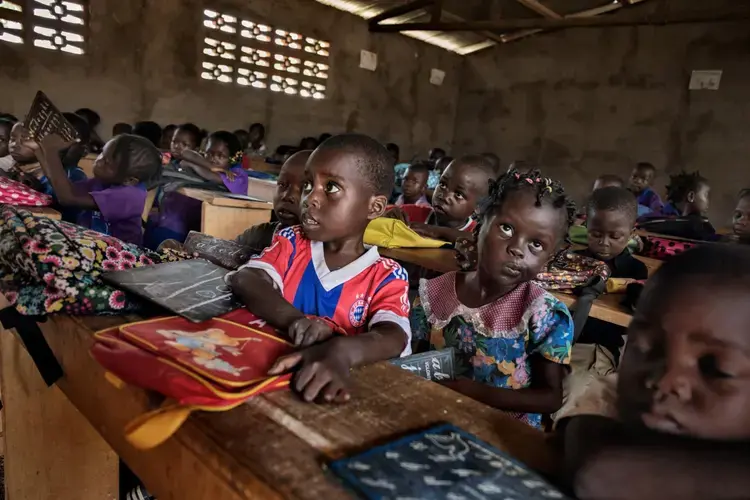
She said she had sex with the soldier one other time, and he gave her some rice. Now she was five months pregnant. Her mother sent her to live with a relative to avoid the shame of facing their neighbors. “There are many other girls like her who also got food for sex from the French but have never told this story.” There was an investigation, she noted, “but there has been no result.” In January French judges decided not to bring charges against soldiers accused of sexually abusing children in the Central African Republic.
In a vacant lot in Bangui, a slender man in a polo shirt plays soccer with a gaggle of energetic boys. He moves with a powerful grace. The ball seems to follow his feet as if he has trained it to obey him. He’s trying to teach the boys a fundamental play called give-and-go. He demonstrates, delivering a crisp pass to a boy and then moving fluidly to receive it back. The lesson runs counter to how the boys play street ball, shooting every time they touch the ball. They listen intently, almost reverently, because the man speaking to them is a national hero. Ibrahim Bohari, who is known to everyone as I. B. (pronounced ee-bay), is the former captain of the national soccer team. Next to the memory of Boganda, the Wild Beasts may be the country’s most unifying force. Its roster includes Muslim and Christian players, and it’s one of the few institutions in which no one cares about a person’s religion or ethnicity.
I. B., who is Muslim, went on to play for professional teams in Belgium and Turkey, and with the Crisis erupting, he chose to move back home. “I couldn’t hear about what was happening and not do something,” he told me.
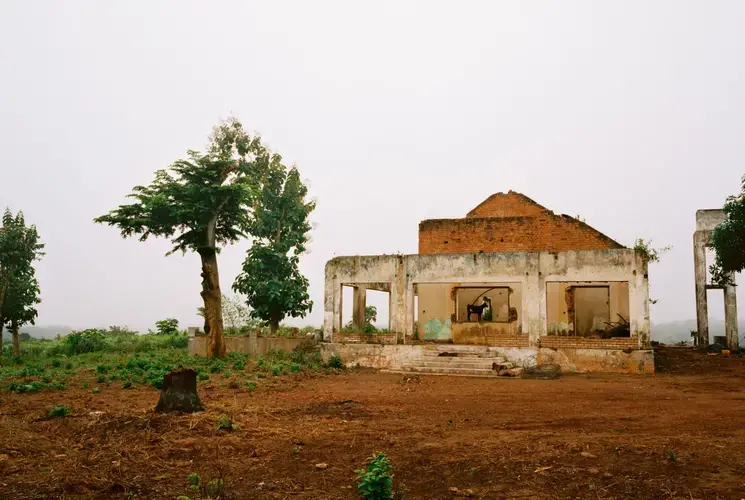
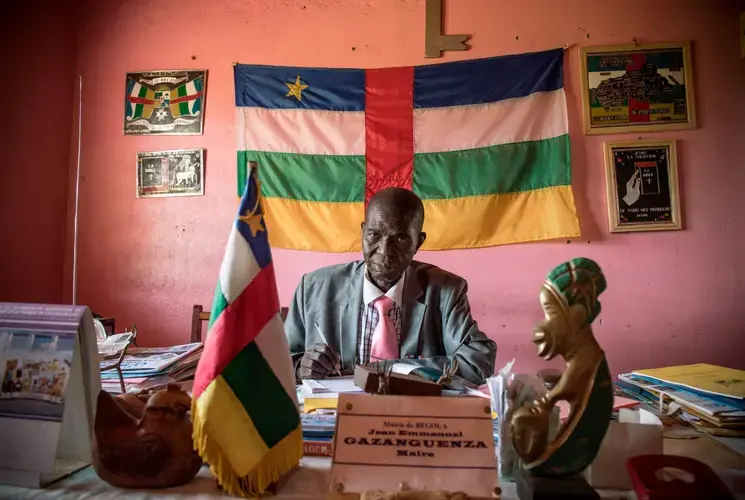
He returned to Bangui to find his fellow Muslims had been chased from his neighborhood. But when he encountered Anti-Balaka fighters, they welcomed him. “I asked them why they didn’t attack me. They said, ‘We can never kill you, I. B. We love you.’ ” He shakes his head at the absurdity.
He set about trying to find ways to help heal his country and one day noticed some boys playing soccer with a ball made of rags. He learned they all had Christian parents who had been killed or had fled. In the evenings they would line up by the bakeries downtown and ask for day-old bread and then go sleep under the mango trees on the road to the presidential palace.
I. B. teamed up with So.Sui.Ben, a Swiss charity, and rented a compound to house a dozen of the youngest boys. Twice a week, after the boys finish their school lessons, he leads them in practice. He’s outfitted them in bright yellow uniforms, including socks and cleats, precious luxuries in a country where nearly all kids play barefoot.
But the orphanage isn’t I. B.’s most ambitious project. He’s been organizing “peace matches,” soccer games between teams he assembles by mixing former Christian and Muslim fighters in some of Bangui’s tensest neighborhoods.
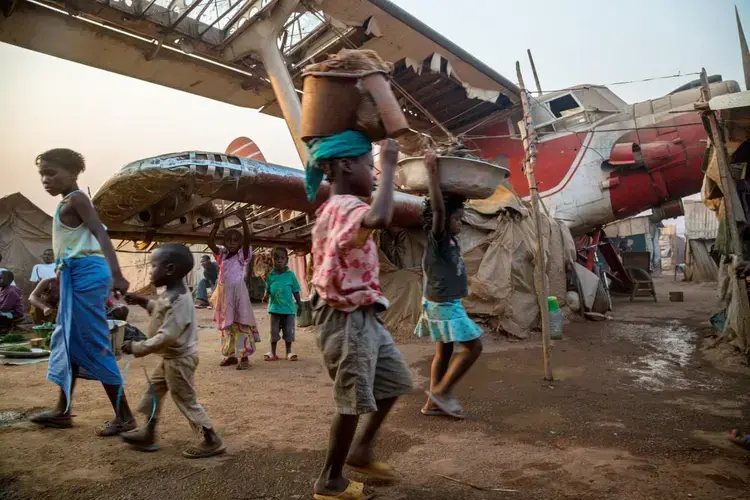
“We have to focus on the young men,” I. B. tells me, noting that part of the problem is that so many have no jobs and their heads are filled with films and music that celebrate violence. “When someone tells them to join a rebel group, they think they can live out this fantasy.”
The matches require weeks of preparation and delicate diplomacy—persuading religious authorities to endorse them, recruiting participants, arranging security with UN peacekeepers, and soliciting donations from businesses. “It’s not just about the game,” I. B. says. “It’s also about showing the community a picture of Muslims and Christians getting along and working together.”
Some in Bangui are skeptical. “A soccer match can’t bring back the dead,” one imam said. “It won’t create jobs. It won’t change people’s hearts.”
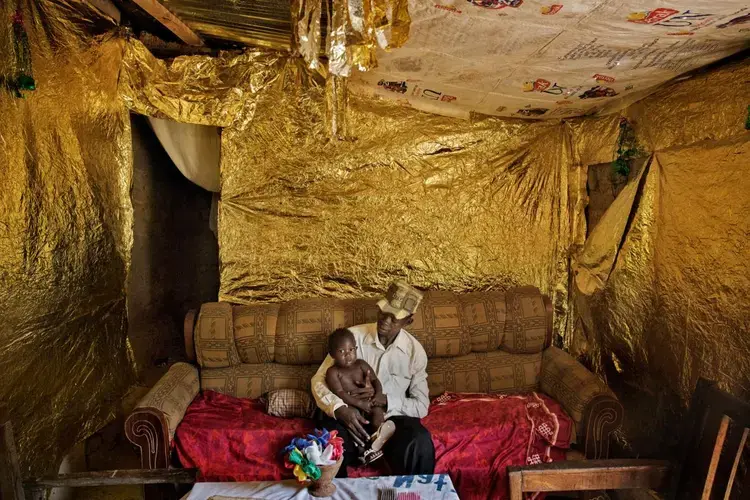
Before leaving the country, I attend a peace match at a primary school in PK5, the Muslim neighborhood where Paul Koli-Miki had his teeth ripped out. A crowd of Christians and Muslims gathers in the stands. The atmosphere is festive. Young women in colorful sundresses hand out sodas. A jovial announcer describes the action and cracks jokes, substituting the players’ names with those of European superstars. “Messi takes the ball from Ronaldo and passes to Zidane,” he barks into the microphone. People are laughing, the sun is shining, and the young men race and jostle and sweat. It’s not the beautiful teamwork that I. B. teaches, but I see him on the sidelines, smiling and cheering. Everyone is cheering.
It is a beautiful, if fragile moment, like a picture made out of butterfly wings.

Education Resource
Meet the Journalist: Peter Gwin
Writer Peter Gwin discusses his reporting on the conflict in the Central African Republic. Gwin has...





